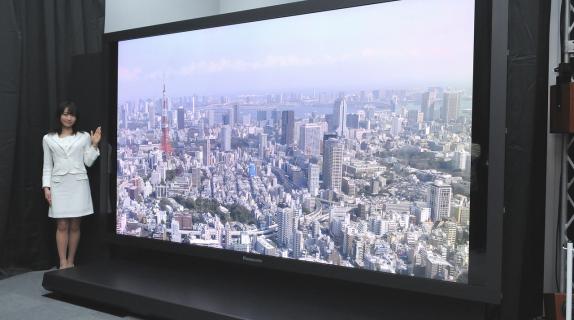Fortunately, no matter how deeply content travels into the far corners of the earth, we’ll always have the good old-fashioned TV room to kick back in and watch some tube at the end of the day… or will we? Charlie Smith reports that, as what we view changes at a breathless clip, so do the technologies by which we view it, and hear it. Don’t plan on tossing out the old La-Z Boy just yet, though you may need to rearrange it a bit to make room for a few of the exciting developments below, designed to revolutionize not the content itself, but how you receive and perceive it.
3D SOUND
Want something awesome to pair with your 3D viewing? How about 3D hearing? Certain home speakers will become so small and precise, the time will come when we can fill a room with hundreds of the things, building them into skirting boards and picture rails that are connected to your TV. The result: You’ll be able to hear rain falling from the sky and hitting the ground, or hear a helicopter fly past over your head and not just behind your sofa as with current 5.1 sound systems.
SUPER HI-VISION
Forget 4K, the future is 8K – about the maximum resolution that the eye is capable of processing. Developed by the science and technical research labs of Japanese national broadcaster NHK, in collaboration with the BBC’s R&D department, a new 8K viewing technology known as Super Hi-Vision was tested at this summer’s London Olympics. Unlike HD TV or even 4K resolution, there wasn’t even the merest hint of pixelation or compression, and with 60 progressive frames-per-second of clean digital footage, there were none of the flickers or low frame rate issues we are used to experiencing on our HD TVs.
AUTOSTEREOSCOPIC 3D TV
3D TV gets a bad rap in part because those glasses can feel heavy and can turn the newly enhanced visual world dim and depressing. Cue autostereoscopic 3D TV, a living room set with a lenticular lens or parallax barrier built into its screen. This gives each eye a different perspective on the projected image, tricking the brain into seeing three dimensions sans the cumbersome spectacles. The current downside to this technology is that the eye can perceive dead spots depending on where you are positioned in the room.
SURROUND VIDEO
The concept of surround video is not far removed from its sister technology, surround sound, aiming to create the feeling of being in the middle of the action by engulfing the viewer in a visual landscape that extends what’s onscreen. To produce this encapsulating content, video is captured during production using two HD cameras mounted side by side on a rig, one with a standard lens with traditional framing, the other with a fish-eye lens to give a much wider field of view. When broadcast, a standard HD TV gets complimented by a wide-angle projector behind the viewer which creates mapped background images of the given scene along the floor, walls and ceilings, filling the viewer’s peripheral vision with the peripheral world of the show.
WAVE FIELD SYNTHESIS
And from the third dimension of listening, we go one dimension further. Okay, so wave field synthesis technology won’t let you travel through time (the fourth dimension) but boy will it transport you. Remember those hundreds of tiny speakers from the first entry? Now imagine a system of amplifiers, multichannel audio interfaces and rendering computers that create surround sound from those little woofers and tweeters, but without that listening sweet spot indicative of current systems. Instead, audio geeks will be able to drool from any spot in the room, creating virtual origin points that leave the sound quality unchanged no matter where you’re standing. The price of this technology is prohibitive at present, but keep in mind that early personal computers cost upwards of $1 million.
ULTRA-HIGH FRAME RATES (300 FRAMES-PER-SECOND)
Current standard television field and frame rates top out at 30 FPS, which can cause problems for motion portrayal. Objects stationary within the video frame are generally sharp, provided they are in focus, but moving objects are prone to an unpleasant visual smearing effect. But television systems are experimenting with successively higher spatial resolutions, including 72, 120 and even 300 frames-per-second. At that highest rate, not only will motion blur cease, but it becomes possible to enable different perspectives to be projected consecutively for each eye – meaning yet another opportunity for glasses-free 3D broadcasting.
DIRECTIONAL SOUND FOR HEADPHONES
It isn’t just the sound of your home viewing experience that is changing, but the sound of your mobile TV watching as well. Future headphones could have a motion compass built in that detects when you are moving your head and adjusts the forthcoming sounds accordingly. This will provide the sense of sound coming from a specific location such as behind you or above you no matter where your head is pointing, tilting or sleeping.
Tags:













































__twocolumncontent.jpg)











